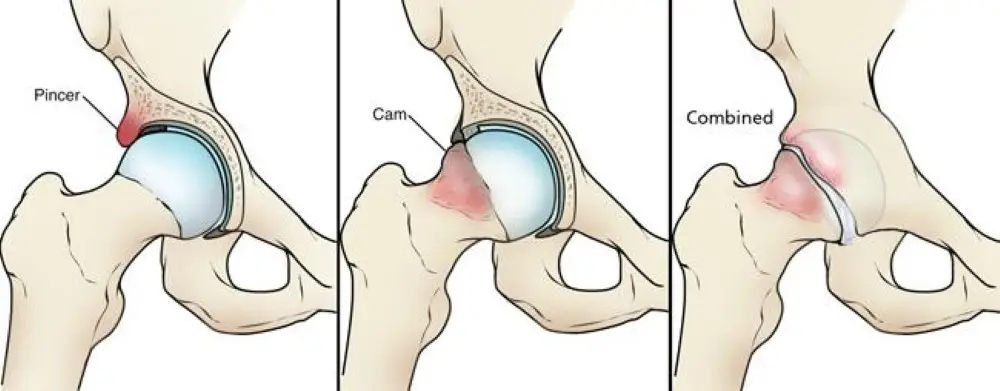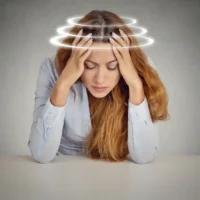Understanding Femoral Acetabular Impingement Syndrome (FAI): A Patient’s Guide to Hip Pain Relief
Femoral Acetabular Impingement Syndrome (FAI) may sound complex, but it’s a common cause of hip pain, especially in active individuals. If you’re experiencing discomfort or stiffness in your hip, understanding FAI can help you find the right treatment. In this guide, we’ll explain what FAI is, its causes, symptoms, and how osteopathic care can relieve your pain and improve movement.
What is Femoral Acetabular Impingement Syndrome?
FAI occurs when the ball (femoral head) and socket (acetabulum) of the hip joint don’t fit together smoothly. This abnormal movement creates friction, which can lead to joint damage over time, causing pain and limiting mobility. The condition is most common in younger, active adults but can affect anyone, particularly those with certain genetic or developmental hip abnormalities.
Scientific Reference: A 2020 study published in the Journal of Clinical Orthopaedics and Trauma highlights that FAI is a leading cause of hip dysfunction, particularly in younger athletes, and is often a precursor to early-onset osteoarthritis .
What Causes FAI?
There are two main types of FAI:
Cam Impingement: Occurs when the femoral head is not perfectly round, leading to abnormal contact with the socket.
Pincer Impingement: Happens when the socket covers too much of the femoral head, causing the surrounding cartilage (labrum) to be pinched.
Some individuals experience a combination of both, known as mixed impingement. This condition is often seen in athletes due to repetitive hip movements, but it can also develop due to genetic factors or hip deformities.
Scientific Reference: Research published in Journal of Orthopaedic and Sports Physical Therapy in 2019 suggests that FAI is particularly common in individuals who engage in sports requiring repetitive hip flexion, such as soccer, hockey, and ballet .
Recognising the Symptoms
FAI symptoms can come on gradually. Here are some common signs:
- Hip pain: Typically felt in the groin area, though it may spread to the outer hip or thigh.
- Stiffness: Particularly noticeable after sitting or resting.
- Limited range of motion: Difficulty with activities that involve rotating the hip.
- Clicking or catching: Some people may experience a popping or locking sensation in the joint.
Activities such as squatting, bending, or twisting at the hip often worsen symptoms.
Scientific Reference: A study in The American Journal of Sports Medicine from 2020 found that individuals with FAI often experience a gradual onset of symptoms, including groin pain and limited hip mobility, which is exacerbated by activities like running and jumping .
Activities That Can Worsen FAI
Certain activities can make FAI symptoms worse, including:
- Sports: Activities that require repetitive hip motion, like soccer, ballet, and hockey.
- Deep Flexion Movements: Squatting, lunging, or any movement that places the hip in deep flexion.
- Prolonged Sitting: Sitting for extended periods can lead to increased stiffness and pain.
- High-impact exercises: Running, jumping, or other high-impact activities that place repetitive stress on the joint.
If you notice these activities increase your hip pain, it’s important to modify or avoid them until you’ve sought treatment.
Scientific Reference: According to a review published in Physiopedia, sports and activities involving repetitive hip flexion or deep hip movements are particularly likely to aggravate FAI symptoms .
How Osteopathic Treatment Can Help
Osteopathy provides a holistic approach to managing FAI, focusing on relieving pain and improving overall joint function. Here’s how osteopathic care can support your recovery:
Manual Therapy: Osteopaths use hands-on techniques to improve joint mobility and reduce muscle tension, helping to alleviate pain and increase range of motion.
Exercise Programs: Tailored exercises can strengthen the muscles surrounding the hip, improving flexibility and supporting the joint.
Posture and Movement Guidance: Learning how to move correctly is essential for reducing strain on the hip. Osteopaths provide personalised advice to prevent further irritation.
Scientific Reference: Recent research published in the Journal of Orthopaedic and Sports Physical Therapy highlights that manual therapy and exercise programs are effective non-surgical treatments for managing FAI, helping patients return to daily activities with reduced pain and improved mobility .
Take Control of Your Hip Health
FAI might sound daunting, but with the right osteopathic care, you can manage your symptoms and restore movement. Don’t let hip pain hold you back—book an appointment with one of our Osteopaths at Completely Aligned today and take the first step towards a pain-free life.
References
- Reiman, M.P., & Peters, S. (2019). “Femoroacetabular Impingement Surgery: Is There Evidence to Support Conservative Interventions?” Journal of Orthopaedic and Sports Physical Therapy. 49(6):280-285.
- Beck, M., et al. (2020). “Management of Femoroacetabular Impingement Syndrome: What Can the Clinician Do?” Journal of Clinical Orthopaedics and Trauma. 11(3): 430-437.
- Matsuda, D.K., et al. (2018). “Comprehensive Hip Impingement Management: Emerging Concepts in Diagnosis and Surgical Treatment of Femoroacetabular Impingement.” Journal of Arthroscopy and Related Surgery. 34(7):2335-2343.
- Cvetanovich, G.L., et al. (2020). “Return to Play and Patient Satisfaction After Hip Arthroscopy for Femoroacetabular Impingement in Adolescent Athletes: A 5-Year Study.” The American Journal of Sports Medicine. 48(8):1957-1962.
- Physiopedia contributors. (2021). “Femoroacetabular Impingement (FAI).” Available at: Physiopedia.
We're ready when you are
Don't let pain hold you back from doing the things you love
At Completely Aligned, our door is always open for you to get back to doing the things you love in life. Our team are available now to chat with you and work out how we can best support you.







